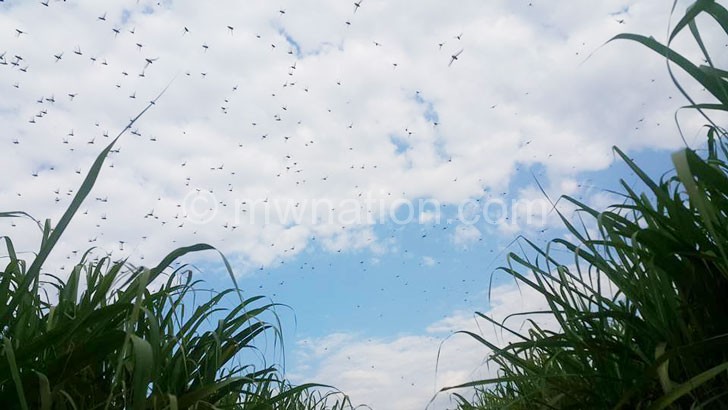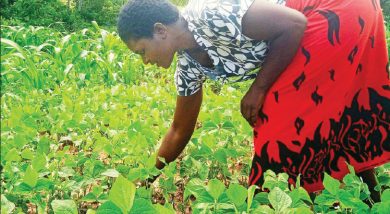Red locusts invade Mulanje
While farmers in Mulanje are still recovering from the devastating impact of fall armyworms which almost wiped out maize crop this year, red locusts have invaded the district.
The Ministry of Agriculture, Irrigation and Water Development says the red locust swarms (dzombe) were first sighted on Tuesday September 19 in Chinyama section along the Ruo River in the area.
“Currently the locusts are moving in a swam moving towards the direction of Luchenza in Thyolo and Thuchila Extension Planning Area (EPA) on the border with Chiradzulu,” said Erica Maganga, Ministry of Agriculture principal secretary in a statement the ministry issued (today) Thursday.

She said so far the affected areas include Unyolo 1 and 2, Sanjika, Ntiza, Thembe, Samera and Golden where locusts have been seen in trees damaging cassava, maize, banana, sweet potato and pigeon peas.
The ministry said it plans to conduct aerial surveys to locate the origin of the swarms and carry out control operations.
“The ministry wishes to assure the public and affected people in Mulanje that it is doing everything possible to deal with and control the situation. The ministry has organised officials to assist communities with pesticides,” Maganga said, adding arrangements for aerial spraying are currently being made and communities are being advised to refrain from picking and consuming weakened or dead locusts.
Meanwhile, the ministry has advised the nation to be alert and immediately report any sighting of swarms to the nearest agriculture office for quick control operations to avoid extensive damage to crops.
Blantyre Agriculture Development Division (ADD) programme manager Martin Kausi on Thursday said his office in collaboration with the ministry officials is still assessing the extent of the damage.
“The ministry is making arrangements with the Red Locust Organisation from Zambia to deal with the situation,” he said.
Last year, the Shire Valley, especially Nsanje District, was invaded by locusts destroying 30 hectares of maize within 14 days.
This happened when people of the district—one of the areas badly hit by the food shortage due to floods—hoped winter cropping would rescue them.
After two weeks of causing havoc, the locusts, identified as African migratory locusts, crossed to Nchalo in Chikwawa where they devoured 405 hectares of sugar cane belonging to Illovo Sugar (Malawi) Limited at the firm’s Nchalo Estate.
The sugar manufacturing company spent about K8 million to fight the locusts which were said to have originated from Mozambique.





